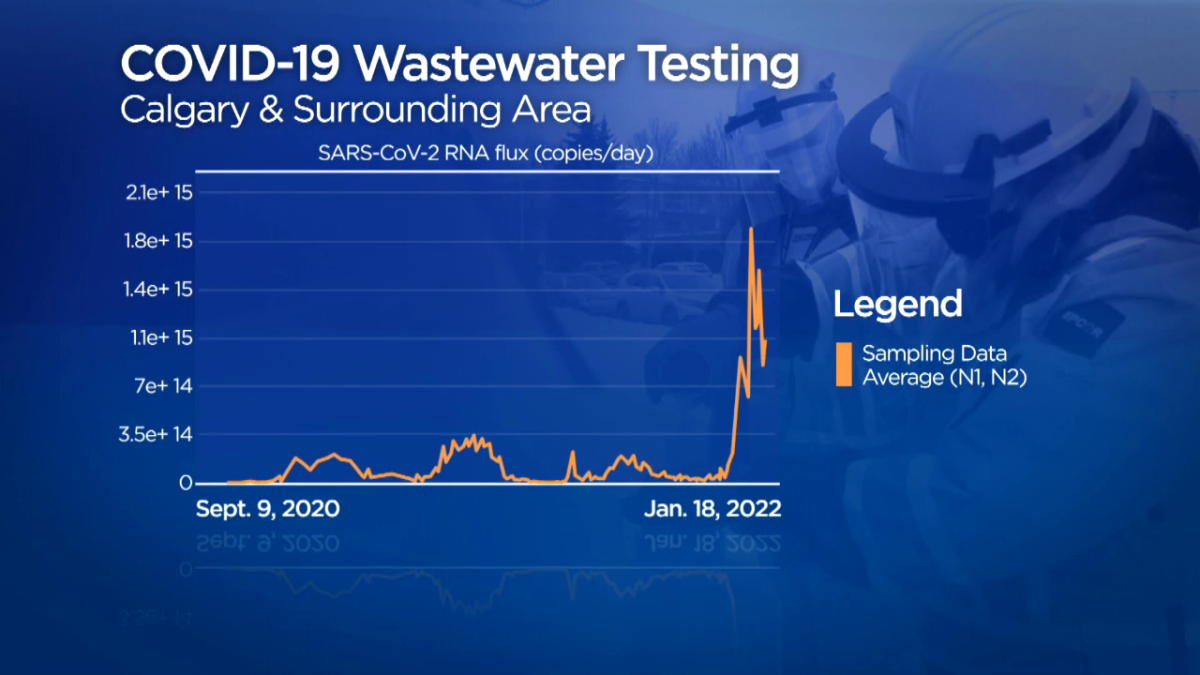Wastewater sampling in Alberta municipalities seem to indicate the beginning of the end of the Omicron-fuelled wave of the COVID-19 pandemic.

“What we’ve seen across Alberta in the samples last collected on Wednesday this week is that wastewater values of SARS-CoV-2 RNA are certainly down from the peak of what we had seen with this fifth wave,” Dr. Michael Parkins of the Cumming School of Medicine said Friday.
“We’re up slightly from where we were on Monday, but we’ve seen a clear and consistent trend over the last five sampling points that wastewater values of SARS-CoV-2 are decreasing, suggesting cases to be diagnosed six days from now are less over time.”
Wastewater-based epidemiology has become the de facto method for the province to track the prevalence of COVID-19 in Alberta municipalities, as the wastewater system captures all COVID-19 cases in a population whether they are symptomatic or asymptomatic.
On Jan. 10, molecular PCR testing – a more accurate test for COVID-19 than rapid antigen testing – was restricted solely to Albertans who are at known risk for severe outcomes and those who live and work in high-risk settings, like continuing care and acute care.
Wastewater monitoring for fragments of SARS-CoV-2, the virus that causes COVID-19, is done in 19 Alberta communities by a coalition of scientists, including at the University of Alberta and University of Calgary.
Parkins, an assistant professor in the University of Calgary’s departments of medicine and microbiology, immunology and infectious disease, said this downward trend is being observed in the two largest cities.

Get weekly health news
Sample values are still higher than prior waves and Parkins said the downward trend isn’t a universal phenomenon across the province.
“Certainly in the larger municipalities, the peak wastewater values – which correlated with cases that we’d be seeing six days in the future – occurred about two-and-a-half weeks back,” Parkins said. “And over the last 10 days, we’ve seen a consistent decline across large municipalities.
“But that’s not necessarily the same everywhere. In some of the smaller municipalities, we see value still increasing, such as Okotoks, Lethbridge and Taber.”
In past waves, wastewater results have preceded spikes in cases. And hospitalizations usually follow increased case numbers.
“We still have an increasing number of people with symptoms from COVID-19 that are coming into hospital,” Parkins said. “So while cases are dropping and are expected to continue to drop, hospitalization rates are increased and will likely continue to increase, representing the peak that we had seen previously.”
On Friday, Alberta announced 1,191 COVID-19 patients were in hospital, a pandemic record.
While the data seems to bear out Thursday’s announcement from Premier Jason Kenney of “early indications that Alberta has reached and surpassed the peak of infections in our province,” Parkins warned the fifth wave still isn’t over.
“Certainly wastewater values suggest we have passed the peak and that things are improving,” he told Global News.
“Of course, that’s dependent on the activity of Calgarians and Albertans.”











Comments